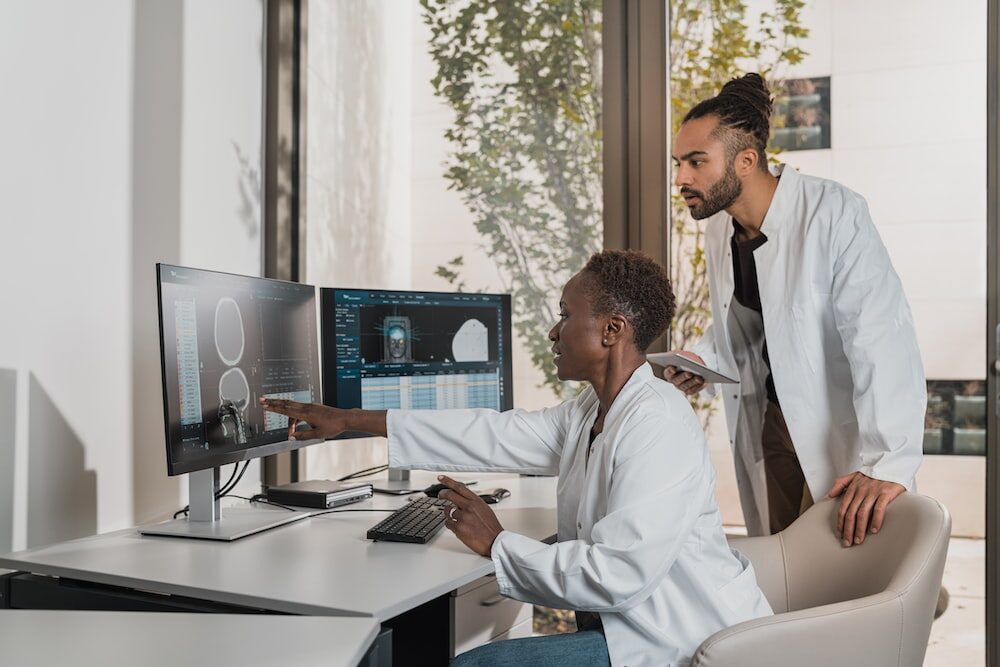AI in Radiology: Emerging Innovations Radiologic Technologists Should Consider
Artificial Intelligence has transformed every industry and is bound to revolutionize the medical imaging process. What if an algorithm could tell patients whether they have cancer based on their CT scan? It will speed up the diagnostic process and help doctors start immediate and effective treatments.
AI in radiology is bound to have a transformation effect because it will help radiologic technologists streamline processes, automate mundane and repetitive tasks and simplify diagnosis. Therefore, instead of being threatened by it, we should embrace the change with open arms.
Here are some emerging innovations that radiologic technologists should consider.
AI-Powered Computer Vision Technology
Computer vision technology is taking the healthcare sector to new heights. AI-powered computer visions and medical imaging systems have the power to detect hidden cancers that are not visible to the human eye. This is particularly useful in detecting breast cancers in mammography, where almost 40% of the disease is missed by doctors when evaluating scans.
The machine learning models are trained with medical image data to provide accurate analysis and recommendations for breast masses, density, and mass segmentation, leading to better risk assessments. The technology is still in its infancy and is being refined to produce results accurately. The technology has the power to assist doctors in detecting cancer accurately.

Tumor Classification
Accurate tumor classification is a crucial aspect of tumor diagnosis and treatment because it helps doctors and relevant medical staff to decide on the best course of action. However, classification can be time-consuming, leading to delays in prompt treatment.
AI-powered medical imaging tools can be used to analyze MRIs and CT scans to speed up detecting tumors and other abnormal cell structures. These AI systems also have the potential to detect tumors in complex situations.
A study has concluded that advanced imaging and AI can classify tumors in less than 3 minutes, which is much faster than manual diagnosis. It also ensures the accuracy and veracity of the diagnosis, which is fundamental to devising relevant treatment plans.
Hidden Fractures
Another useful AI tool in radiology is detecting bone fractures that are invisible to the human eye. These AI-enabled imaging tools can help detect fractures by reducing noise and providing more accurate depictions of radiological images. Furthermore, ML algorithms can be trained to recognize patterns that signify an anomaly and alert radiologic technologists to conduct further investigations.
Programs for Radiologic Technologists
Radiologic technologists must be trained appropriately to ensure they maximize the use of AI to their advantage. While there has been an increase in the number of radiology professional courses focused on AI, there are still some areas of improvement.
To put it into context, many training programs focus on the conceptual aspects of emerging technologies, while we need programs that demonstrate how these AI tools operate.
Specialized programs should be included as part of the CEUs for radiologic technologists to ensure they remain updated with the latest innovations and trends in the AI field. Continuing education is essential for radiologic technologists because it helps them perform their jobs better.
If you’re looking for the best online courses for radiologic technologists, you’ve come to the right place! At Radiological Services LLC, we offer various CEUs that help professionals with all their medical imaging needs. In addition, we are certified with the ASRT and ARRT.
We currently offer the following:
- Bone Densitometry
- CT
- Digital Mammography
- Digital Radiography
- MRI
- Nuclear Medicine
- Radiation Protection
Contact us today and learn more about our offerings in detail.
